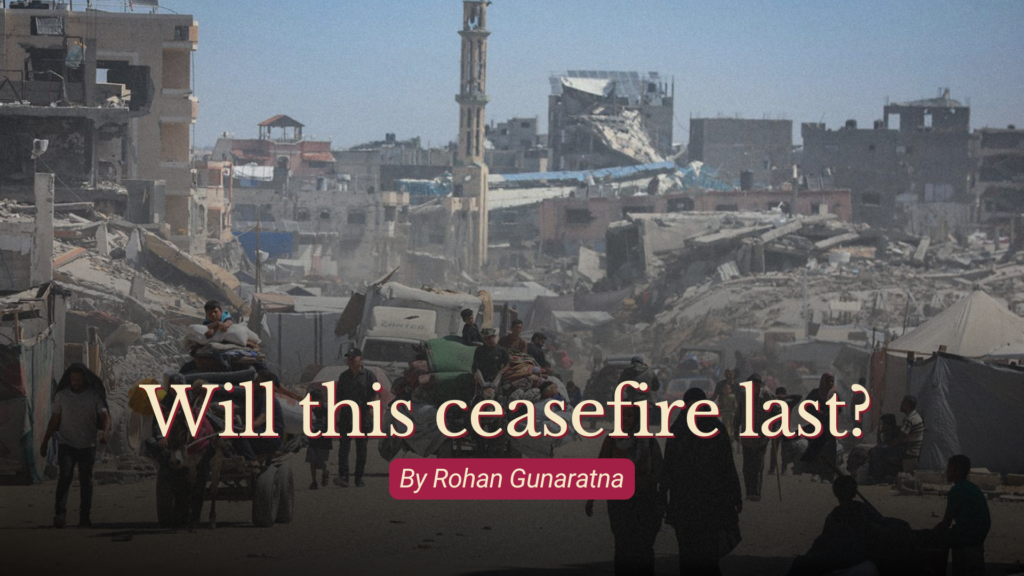
By Rohan Gunaratna
Although Israel and Hamas pledged to uphold the ceasefire that took effect on Oct. 10, 2025, each side has accused the other of violating it.
The saturated bombing, relentless shelling, bulldozing and controlled demolitions in Gaza is likely to resume.[1] Israel backed by the US is moving towards creating a terror-free Gaza. A monumental challenge, it can only be established if the U.S. and Israel works closely with the Arab and the Muslim World.
When the Israeli Defence Forces (IDF) withdrew from 47% of the Gaza Strip, the international community made a terrible mistake. A power vacuum was created in Gaza. Hamas immediately reasserted domination and control. With ruthless efficiency, Hamas conducted raids, arrests and executions by targeting centres of power, mostly clans, extended families and families that had collaborated with Israel. A totalitarian organisation, Hamas reinforced authority by instilling fear.
The peacekeeping forces from the Arab and Muslim nations should have deployed in areas evacuated by the IDF. Hamas should never have been allowed to fill that void. The International Stabilisation Force (ISB) should have been ready, stepped in, and taken over its role of peacekeeping and if necessary peace enforcement.
To establish peace, Hamas and its allies should be forcibly disbanded. Hamas and some of the threat groups have resisted pressure to disarm.
The Context
Since the ceasefire took effect on October 10, 2025, 20 living Israeli hostages have been returned in exchange for nearly 2,000 Palestinian prisoners and detainees in Israeli jails and other detention centres. Hamas has handed over the remains of over half of the 30 deceased hostages. As part of the deal, Israel partially withdrew its military from Gaza, while trucks, lorries and other vehicles carrying humanitarian aid were allowed into the territory. On October 19, violence flared up in the Strip following an anti-tank missile attack which killed two Israeli soldiers. Israel blamed Hamas for the assault and responded with air strikes, killing dozens of Palestinians.
The US President Donald J. Trump, who helped broker the ceasefire, sent envoys, including Vice President JD Vance so the Gaza deal can move to its next phase to ensure a permanent end to the two-year war. Otherwise, with the resumption of violence, the innocent civilians in Gaza will continues to suffer. Until stability and security is restored in Gaza, Hamas and its allies will politicise, radicalise and mobilise its population to fight in the next war. Israel will continue in its relentless strikes to eliminate Hamas, its allies and its sponsors.
To address these challenges, the U.S. Central Command (CENTCOM) opened a Civil-Military Coordination Center (CMCC) to Support Gaza Stabilization in Israel on October 17, 2025. Headquartered at MacDill Air Force Base in Tampa, CENTCOM directs and enables military operations and activities to promote stability, security, and prosperity across the Middle East, Central Asia, and South Asia. The U.S. Army Central (ARCENT), the Army component under CENTCOM, headquartered at Shaw Air Force Base in South Carolina, will play the lead role.
The main coordination hub for Gaza assistance, CMCC was established five days after world leaders signed a U.S.-brokered plan to permanently end the war between Israel and Hamas. Designed to support stabilization efforts, the U.S. military personnel will not deploy into Gaza but will instead help facilitate the flow of humanitarian, logistical, and security assistance from international counterparts into Gaza. CENTCOM stated that CMCC will bring “together stakeholders who share the goal of successful stabilization in Gaza is essential for a peaceful transition,” said Admiral Brad Cooper, commander of CENTCOM.[2]
“Over the next two weeks, U.S. personnel will integrate representatives from partner nations, non-governmental organizations, international institutions, and the private sector as they arrive to the coordination center.”[3]
The CMCC will also monitor implementation of the ceasefire agreement, featuring an operations floor that allows staff to assess real-time developments in Gaza. Additionally, office and meeting spaces are set up to foster collaborative planning among leaders, representatives, and staff. About 200 U.S. service members with expertise in transportation, planning, security, logistics, and engineering established the CMCC under the leadership of Lt. Gen. Patrick Frank, commander of ARCENT.
“The team worked tirelessly to build the CMCC from the ground up,” said Cooper. “They can take great pride in knowing that they have built something that is critical to enabling the transition to civilian governance in Gaza”.[4] CMCC will be joined by foreign militaries including the British military. Led by a senior commander who will serve as the deputy to a US commander, British troops have been deployed to Israel to monitor the Gaza ceasefire!
The British troops were deployed following an American request. The troops will be embedded in the Civil-Military Coordination Centre (CMCC) that is also expected to include troops from Egypt, Qatar, Turkey, Indonesia, and the United Arab Emirates. The British deployment came barely a week after Foreign Secretary Yvette Cooper said the UK had “no plans” to send soldiers.
Background
The face of the Middle East changed after Hamas and its allies attacked Israel on October 7, 2023. Israel responded harshly and the devastating war in Gaza resulted in international condemnation. The Hamas attack and Israel’s response resulted in 70,100 deaths and 60 million tonnes of rubble. As of 7 October 2025, over 70,100 people (68,172 Palestinians and 1,983 Israelis have been killed in the Gaza war according to the Hamas run Gaza Health Ministry (GHM) and Israeli Ministry of Foreign Affairs. This includes 217 journalists and media workers, 120 academics, and 224 humanitarian aid workers. The aid workers includes 179 employees of UNRWA, a UN organisation infiltrated by Hamas.
In addition, Hamas infiltrated the media organisations and recruited social media activists.
With Hamas using civilians as human shields, about 80% of Palestinians killed are civilians. A study by OHCHR, which verified fatalities from three independent sources, found that 70% of the Palestinians killed in residential buildings or similar housing were women and children. Gaza’s recovery could take more than a decade and the reconstruction will cost USD 80 billion dollars.
Trump’s original plan was to relocate the Gazans and redevelop Gaza as a destination. With mounting fatalities and casualties, the international community met at the United Nations calling for a two-state solution. To ensure peace for Israelis and for the Palestinians, world leaders led by President Trump and Field Marshall Abdel Fattah el-Sisi convened in Egypt for Peace in Gaza. The document signed in Sharm el-Sheikh on October 14, 2025, stated:
“We call for tolerance, respect, and equal opportunity for every individual, while ensuring that the region remains a place where everyone can aspire to peace, security, and economic prosperity – regardless of race, religion, or ethnic origin. We strive for a comprehensive vision of peace, security, and shared prosperity in the region, based on principles of mutual respect and a shared destiny.
In this spirit, we welcome the progress made in establishing comprehensive and sustainable peace arrangements in the Gaza Strip, as well as the friendly and mutually beneficial relations between Israel and its regional neighbors. We commit to working together to implement and preserve this legacy, and to build the foundations upon which future generations can thrive together in peace. We collectively pledge to a future of sustainable peace.”
The signatories:
- Donald J. Trump – President of the United States
- Abdel Fattah el-Sisi – President of Egypt
- Tamim bin Hamad Al Thani – Emir of Qatar
- Recep Tayyip Erdoğan – President of Turkey
- Donald J. Trump – President of the United States
- Abdel Fattah el-Sisi – President of Egypt
- Tamim bin Hamad Al Thani – Emir of Qatar
- Recep Tayyip Erdoğan – President of Turkey
On Oct 14, 2025, the White House published President Trump’s vision after the U.S. signed the Gaza Peace Plan. For peace to sustain, demilitarisation is the essential step before reconstruction. Trump remarked: “To rehabilitate Gaza – it must be demilitarized.” The same message was given to Lebanon. Hezbollah must disarm before any money is sent to rehabilitate Lebanon.
Although Israel stated that it will destroy the military and governing capabilities of Hamas and its allies, Hamas has returned a day after IDF withdrew and the ceasefire was established on October 12, 2025. Hamas did not lose any time is exercising dominance and control of the Gaza City.[5] Hamas identified the entities that worked against it and started to systematically eliminate them. As Hamas believed that Israel also recruited prisoners, Hamas also eliminated a handful of prisoners released by Israel.
The cycles of war and peace
The ceasefire was disrupted from time to time.
On Sunday October 19, 2025, Palestinians were returning to their villages, towns, and cities after the withdrawal of IDF from Central Gaza. Having witnessed the scale of destruction, many hoped war will not resume. Having received the 20 living hostages and most of the 30 deceased hostages, Israelis also hoped for peace. However, the IDF attacked Hamas during ceasefire on Oct 19, 2025 after two Israeli soldiers were killed in a Hamas attack in Rafah, southern Gaza. In response, the IDF carried out airstrikes and artillery shelling across Gaza, killing at least 44 Palestinians, according to Gaza’s hospital sources.
Nahal Brigade soldiers Major Yaniv Kula, 26, and Staff Sergeant Itay Yavetz, 21, were killed in southern Gaza on October 19, 2025. Major Yaniv Kula, aged 26, from Modi’in-Maccabim-Reut was a company commander in the 932nd battalion, Nachal Brigade and Staff Sergeant Itay Yavetz, aged 21, was from Modi’in-Maccabim-Reut, a combat soldier in the Erez Leadership Program, in the 932nd battalion, Nachal Brigade. In the incident, a reserve soldier in Combat Engineering Heavy Equipment Unit (TZAMA), Gaza Brigade, was severely injured. The soldier was evacuated to a hospital for medical treatment, and his family has been notified.
Israeli Prime Minister Benjamin Netanyahu responded: “On behalf of the entire people of Israel, my wife and I send our heartfelt condolences to the families of the Nahal Brigade soldiers – Maj. Yaniv Kula and Staff-Sgt. Itay Ya’avetz, of blessed memory – who fell in the difficult incident in Rafah. I also send wishes for a speedy recovery to our wounded in that incident. Yaniv and Itay fought valiantly against the Hamas murderers to protect the security of Israel. Their courage and heroism will be cherished in our hearts forever. May their memory be for a blessing.”[6]
Israeli Ambassador to the UN Danny Danon responded: “Earlier today, two IDF soldiers, Maj. Yaniv Kula and Staff Sgt. Itay Yavetz, were killed by Hamas terrorists in Rafah in what was a flagrant violation of the ceasefire agreement. We mourn their loss and send our condolences to their families. Israel has abided by the terms of the ceasefire agreement, but we will make it clear to Hamas terrorists that the IDF will do whatever it takes to protect Israel’s security.”[7]
The investigations revealed that Hamas members exited a tunnel shaft in Rafah at around 10:30 a.m. and fired an antitank missile towards an IDF engineering vehicle followed by sniper fire towards an additional engineering vehicle. After a few minutes, Hamas members fired again using sniper weapons and additional gunfire targeting IDF forces in the area.
In response, the IDF began striking in the area to eliminate the threat and dismantle tunnel shafts and military structures used for terrorist activity, stressing that, “These terrorist actions constitute a blatant violation of the ceasefire agreement, and the IDF will respond firmly.”
Hamas has not stopped targeting clans, extended families and families. The Al-Mughani family condemned Hamas public executions of innocent Gazans. The family issued a statement after one of their members, Hussni AlMughani, appointed by Hamas as “Head of Gaza Tribes,” endorsed and justified these crimes.
To discuss the Gaza ceasefire, Israeli Prime Minister Benjamin Netanyahu and Hassan Mahmoud Rashad, the head of Egypt’s General Intelligence Service, met on October 21, 2025.
In a statement, Netanyahu’s office said the two met in Jerusalem with teams. “They discussed advancing (U.S. President Donald) Trump’s plan, Israel-Egypt relations and strengthening peace between the countries, as well as other regional issues,” the office said.
The rare meeting came amid uncertainty over the ongoing fragile ceasefire between Israel and Hamas in Gaza and as U.S. Vice President JD Vance arrived in Israel in a bid to shore up the ceasefire.
When Netanyahu met with the head of Egyptian intelligence he categorically rejected Turkey’s involvement in the stabilization force. He also rejected the involvement of the Palestinian Authority until they reform.
Challenges
Visiting US Vice President J.D. Vance to Israel on October 21, 2025 said US President Donald Trump’s ceasefire plan was going better than expected. Vance reiterated his optimism. “I never said it was easy. But what I am is optimistic that the ceasefire is going to hold and that we can actually build a better future in the entire Middle East,” he said.
Turkiye, which helped persuade Hamas to accept Trump’s plan, has said it would take part in the international task force to monitor the ceasefire implementation, and that its armed forces could serve in a military or civilian capacity as needed. Nonetheless, Israel is very cautious of the presence of Turkish security forces in Gaza. When asked about the Turkish deployment on October 22, 2025, Israeli Prime Minister Netanyahu said in Jerusalem alongside visiting US Vice President JD Vance, “I have very strong opinions about that. Want to guess what they are?” Israel expressed its opposition to any role for Turkish security forces in the Gaza Strip as part of a mission to monitor a US-backed ceasefire with the Palestinian militant group Hamas. Netanyahu said they had discussed the “day-after” for Gaza, including who could provide security in the territory shattered by two years of war. Although Turkiye’s Foreign Ministry did not immediately respond to a request for comment, it is not a secret that Israel and Turkey have poor relations.
With a fragile ceasefire in place for 12 days, focus switched to the second phase of Trump’s Gaza plan which requires Hamas to disarm and foresees the establishment of an internationally-supervised Palestinian committee to run Gaza with an international force supporting vetted Palestinian police.
Despite Trump’s relationship with Turkish President Tayyip Erdogan, Vance said on October 21, 2025 there would be a “constructive role” for Turkiye to play but that Washington wouldn’t force anything on Israel when it came to foreign troops “on their soil.” NATO member Turkiye and Israel clashed during the Gaza war, after Erdogan sharply criticizing Israel’s attacks on the enclave and elsewhere in the region, especially Syria.
Vance said: “We have a very, very tough task ahead of us, which is to disarm Hamas, but rebuild Gaza to make life better for the people of Gaza, but also to ensure that Hamas is no longer a threat to our friends in Israel.”
Hamas and allies are unlikely to disarm. As long as the ideology of Hamas is intact, Hamas will play a survival game. A Hamas-free Gaza is an exceptional challenge. The Islamic Republic of Iran through its intelligence service in the Iranian Revolutionary Guard Corp, is directing Hamas and many of its allies. The Israelis weakened the Lebanese Hezbollah, another Iran supported partner of Hamas although the group has started to restore its capabilities. After the U.S. and Israel attacked Iran’s military and nuclear infrastructure in June 2025, Gazans who don’t wish to be at war for the cause have a chance to live a normal life rather than being pawns in a political game.
Recent Developments
On Oct 28, 2025, the fighting resumed. The IDF Air Force F16s bombing resumed strikes against Hamas. The limited operation was in retaliation to Hamas handing over the remnants of a body of a hostage on October 27 that the IDF had already recovered. The IDF stated that the body of the deceased hostage handed over by Hamas was recovered from a building, then covered with sand and staged. When the Red Cross arrived, the Hamas pretended to have just recovered the body from beneath the ground. The IDF was observing the entire act of Hamas deception from its observation post. Israel stated that Hamas knows where the captive hostages are and continues to play games.

On Oct 27, 2025, the remnants of the “body” that Hamas handed over were from the remains of the body of Ofir Tsarfati, who was extracted from Gaza in an IDF operation nearly two years ago. Hamas found more pieces of the body the IDF had already found themselves. With Hamas trading in body parts, the Israeli Prime Minister held an emergency discussion following Hamas’s violation and authorised strikes on October 28, 2025. After releasing the footage of Hamas staging the extraction of the remnants of a deceased Israeli hostage in front of the Red Cross, the IDF carried out the limited strikes on Hamas on Oct 28, 2025. Both sides Hamas and Red Cross did not know that the IDF was filming from above! First, they took the remains out of a building, then dumped them outside, covered them with sand, and pretended to have found them under the dirt. The security establishment after reviewing the footage recommended that the cabinet order the IDF to launch an airstrike following repeated violations by Hamas. Netanyahu consulted Trump before he authorised the strikes.

Under pressure, Hamas announced that its military wing retrieved the body of the deceased hostage Sahar Baruch from a place where it was digging in the Nuseirat refugee camp in the central Gaza Strip. With multiple strikes starting October 28, 2025, IDF put Hamas under pressure to return the hostages. On October 28, 2025, a crater was formed by Israeli attacks against Hamas near the Shifaa Hospital. The cease fire was breached by both parties. In addition to Hamas terrorists and IDF personnel, civilians were killed and injured in the cycle of fighting. Hamas opened fire on IDF forces in the Rafah area in the Gaza Strip, using anti-tank weapons and snipers. An IDF soldier was killed and several others were wounded in the southern Gaza Strip on October 28 when a Hamas squad emerged from a tunnel shaft and launched a combined attack using anti-tank fire and sniper rifles. IDF returned fire and are conducting searches. In a discussion held by the Israeli Prime Minister, it was decided to expand the area that Israel holds in the Gaza Strip beyond the yellow line. The Prime Minister Netanyahu coordinated the move with senior American officials. Such pressure is likely to result in the release of the remains of the deceased hostages but also disrupt the ceasefire permanently.
On Oct 28, 2025, Master Sergeant (Res.) Yona Efraim Feldbaum, 37, a soldier from the Combat Engineering Corps in the Gaza Division, a husband and father of 5 young children, was killed by Hamas terrorists in southern Gaza. At the exact same location, another piece of engineering equipment was attacked by Hamas the previous day. The Israeli intelligence community assessed that the lack of retaliation then led to the attack, in which a soldier was killed.
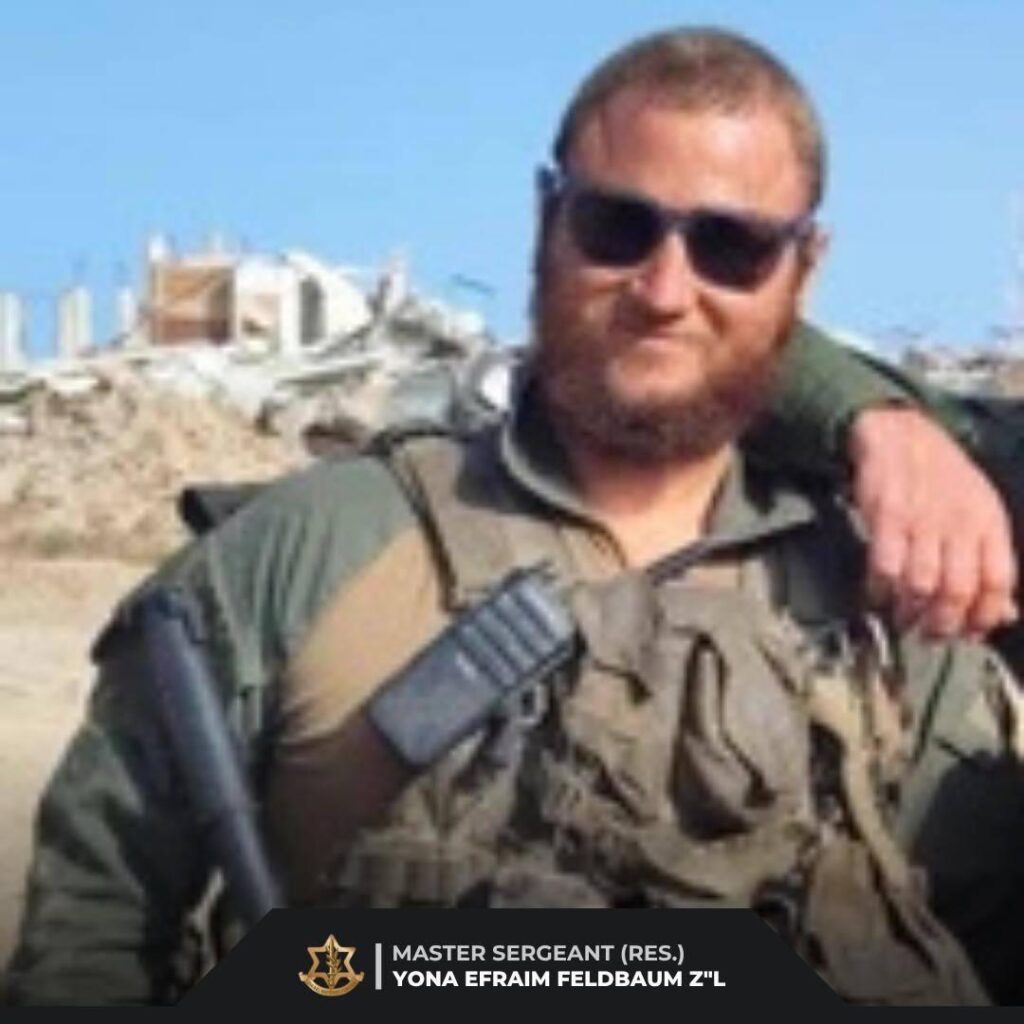
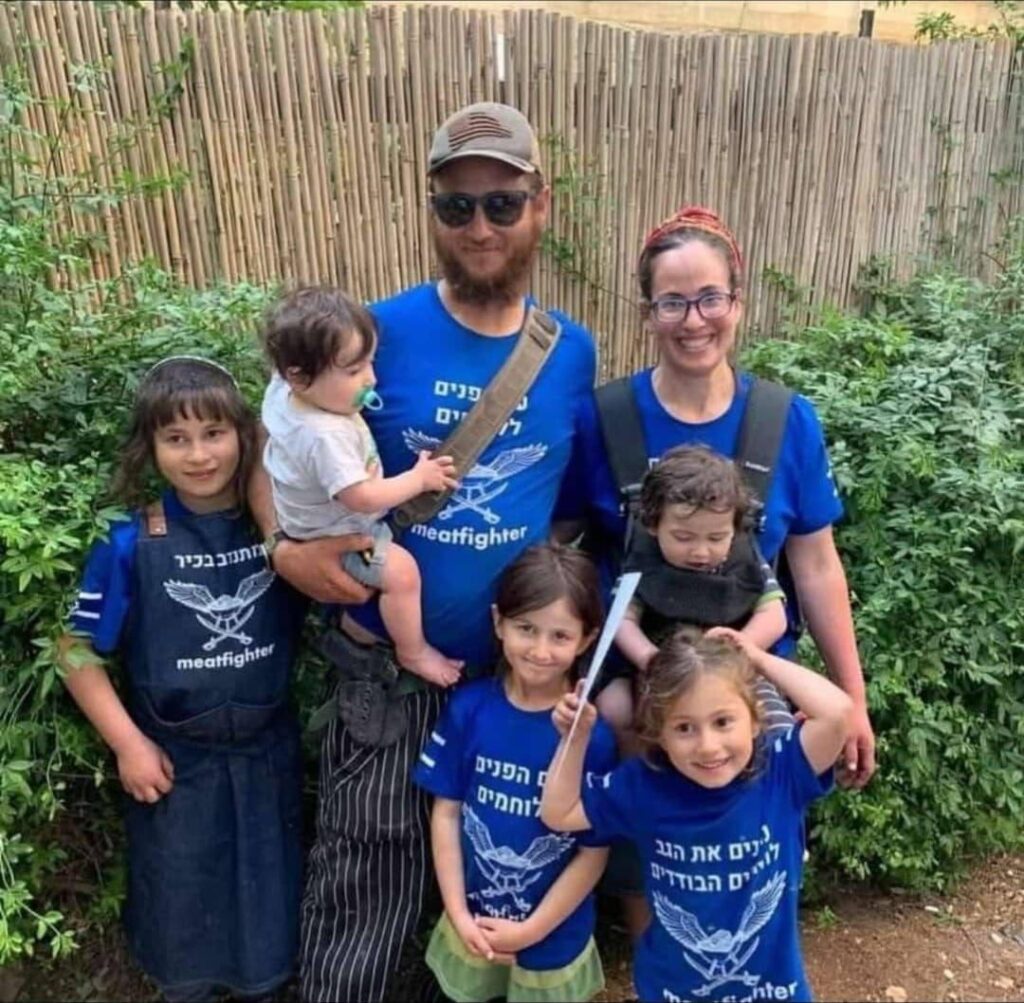
President Trump last night backed Israeli response: “Hamas hit an Israeli soldier and Israel fired back. They need to fire back. This will not endanger the ceasefire. Hamas needs to behave well. If they do not behave well, they will be destroyed and they understand that”.
Trump said: “Israel has the right to respond” The strikes in Gaza continued throughout the night, leaving over 60 dead and hundreds wounded on the Palestinian side.
Under pressure from mediators and from IDF attacks, on Oct 29, 2025, Hamas stated that the remains of the deceased hostages Amiram Cooper and Sahar Baruch have been located. They are likely to be transferred to IDF in the coming days.

On Oct 29, 2025, the IDF authorized Hamas personnel to enter a controlled area inside the Yellow Line, solely to locate the bodies of deceased hostages. But under Red Cross cover, Hamas used the access to reach hidden weapons stockpiles instead. Under Red Cross escort, Hamas used the hostage search as cover to uncover and retrieve weapons hidden inside an IDF-controlled zone. In response, Israeli Defense Minister Israel Katz on October 28, 2025 has signed an order banning Red Cross visits to terrorists held in Israeli prisons. “Based on the information presented to me, it is clear beyond any doubt that Red Cross visits to terrorists would pose a serious threat to national security,” Katz said. With this decision, Katz has effectively shut the door on alleged Red Cross intelligence leaks – visits that had become a covert channel for Hamas communication and planning.
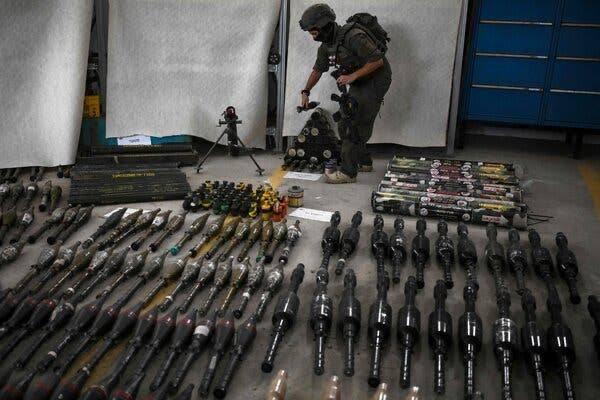
In response to the Hamas violations, Israel put Hamas representatives abroad on notice! Oct 29, 2025, Defense Minister Israel Katz said, “Dozens of Hamas commanders were neutralized in a strong IDF operation since yesterday in response to the attack on IDF soldiers and the blatant breach of the agreement for the return of abducted hostages, in addition to strikes on dozens of infrastructure targets. There is and will be no immunity for anyone in the leadership of the Hamas terrorist organization – not those in suits nor those hiding in tunnels – whoever raises a hand against IDF soldiers – their hand will be severed. The IDF has been instructed to act forcefully against every Hamas target, and so it will be in the future. Whoever attacks IDF soldiers and violates agreements will pay the full price.”
On Oct 29, 2025, Trump stated that “nothing is going to jeopardize” the ceasefire in Gaza, but added that Israel “should hit back” if its soldiers were killed. His remarks came a day after an Israeli soldier was killed in Rafah, and as Jerusalem and the terror group accused each other of violating the ceasefire deal. “They killed an Israeli soldier. So, the Israelis hit back. And they should hit back,” Trump told reporters on Air Force One. “Hamas is a very small part of peace in the Middle East, and they have to behave. They said they would be good, and if they’re good, they’re going to be happy, and if they’re not good, they’re going to be terminated,” he continued, referring to the apparent understanding that was reached when his top aides met with Hamas’s lead negotiators in Egypt in the final hours before a ceasefire agreement was reached.

IDF in Response to Hamas’ Blatant Violations of the Ceasefire Agreement
The IDF and ISA Precisely Struck Dozens of Terror Targets Belonging to Terrorist Organizations in the Gaza Strip
Overnight, in response to Hamas’ blatant violation of the ceasefire agreement yesterday (Tuesday), the IDF and ISA, guided by IDF intelligence, carried out precise strikes against dozens of Hamas terror targets throughout the Gaza Strip.
The targets struck included key terrorists, observation posts, weapons production warehouses, launch posts, underground tunnels, and mortar shell firing posts. In addition, the IDF conducted strike attempts targeting three terrorists at the rank of battalion commander, two terrorists at the rank of deputy battalion commander, and sixteen terrorists at the rank of company commander.
Within the past 24 hours, dozens of terrorists from the terrorist organizations in the Gaza Strip were targeted.
Among those targeted and eliminated were terrorists who infiltrated Israeli territory during the massacre of October 7th: Muhammad Isa, who served as the commander of a Nukhba platoon; Fawwaz ‘Uwayda, who served as the commander of a Nukhba terrorist cell; and terrorists from the Mujahideen terrorist organization, Muhammad Abu Shari‘a and Nidal Abu Shari‘a.
In a precise strike, the IDF eliminated the terrorist Hatem Maher Mousa Qudra, a Nukhba company commander in northern Khan Yunis who led the infiltration into Kibbutz Ein Hashlosha during Hamas’ brutal October 7th massacre.

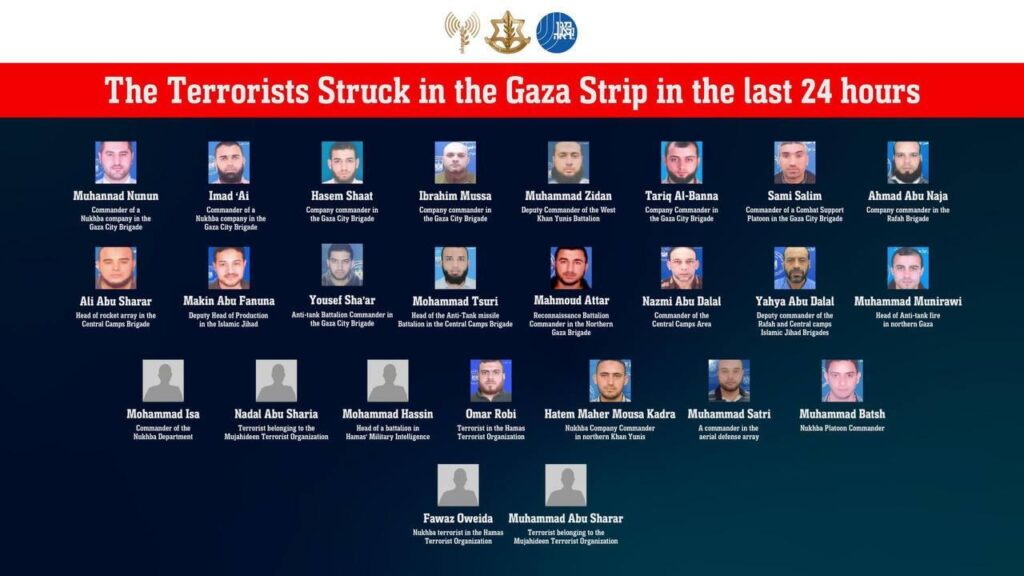

The Future
What is important is to end the conflict in the Middle East. It is a complex conflict. In as much as Iran is supporting Hamas and its allies, the Israeli right-wing politicians are planning to apply sovereignty over the Palestinian Territories. In response, Trump warned that Israel could lose “All” US support if it annexes West Bank. Reassuring the Palestinians, Arab and Muslim communities and their governments, Trump spoke to Time Magazine about Israel applying sovereignty over Judea and Samaria, and said, “It won’t happen. It won’t happen. It won’t happen because I gave my word to the Arab countries. And you can’t do that now. We’ve had great Arab support. It won’t happen because I gave my word to the Arab countries. It will not happen. Israel would lose all of its support from the United States if that happened.”
In response to Israeli lawmakers advancing two bills paving the way for West Bank annexation, visiting US vice president Vance said it was a “very stupid political stunt and I personally take some insult to it.” As US Secretary of State Rubio left Washington, he warned Israel against annexing the West Bank, saying steps taken by parliament and settler violence threatened the Gaza truce.
Conclusion
The armed conflict in Gaza will persist. At the cost of global criticism, Israel is likely to start to hunt down Hamas and its allies in Gaza and eliminate their leadership and membership overseas. Unless there is international commitment to restore the ceasefire and ensure disarmament of Hamas and its allies, the fighting will escalate.
As difficult as it is to accept it, the destruction of Gaza by Israel was triggered by a massacre conducted by Hamas-led threat groups. The threat or the act of political violence against civilians is terrorism and not “resistance”. Hostage taking is terrorism. Although it deserves global condemnation, due to the failure of the International Community to resolve the Israeli-Palestinian conflict, many in the Arab and Muslim World perceive Hamas and its allies as “freedom fighters”. Freedom fighters do not engage in killings, maiming, injuring, raping, arson and hostage taking of civilians.
Palestine needs recognition and a 2-state solution is critical. But Israel needs recognition too. So, Israel’s response will be harsh until the Arab and the Muslim World recognise Israel’s right to exist.
When the threat groups targeted Israelis and foreigners on October 7, many in the Arab and Muslim World silently and openly supported Hamas’s actions. To this date, a few government leaders endorse the massacre and fail to identify Hamas-led threat groups as terrorists.
In this intractable conflict, Israel too is not without blame. Both the right-wing Jews and the Islamists are driven by ideologies shaped by generations of conflict. Hamas and its allies have no regret and remorse of October 7 massacre. Likewise, the right-wing Jews are determined to fight back with a vengeance.
With Hamas imposing its rule during the ceasefire, Gazans are realising that Hamas brought this suffering upon the Palestinians. With Hamas executing its own people in broad daylight, kefiyah-wearing protesters have lost their voices. Islamists worldwide legitimise Hamas rule and actions. Hamas started the war in Gaza and bears ultimate responsibility for it. It’s certainly true that Israel employed hugely excessive force, but Hamas was the instigator and the sooner Hamas is dismantled peace can be restored in the Middle East. As long as Hamas retains power, the next attack is certain and Israeli retaliation is inevitable.
Rohan Gunaratna is editor of the Handbook of Terrorism in the Middle East
[1] https://m.youtube.com/watch?v=K-uBZ_UGGqM
[2] https://www.centcom.mil/MEDIA/PRESS-RELEASES/Press-Release-View/Article/4325130/centcom-opens-civil-military-coordination-center-to-support-gaza-stabilization/
[3] Ibid
[4] Ibid
[5] https://m.youtube.com/watch?v=j03D9BAblIc
[6] https://www.israelnationalnews.com/news/416480
[7] Ibid